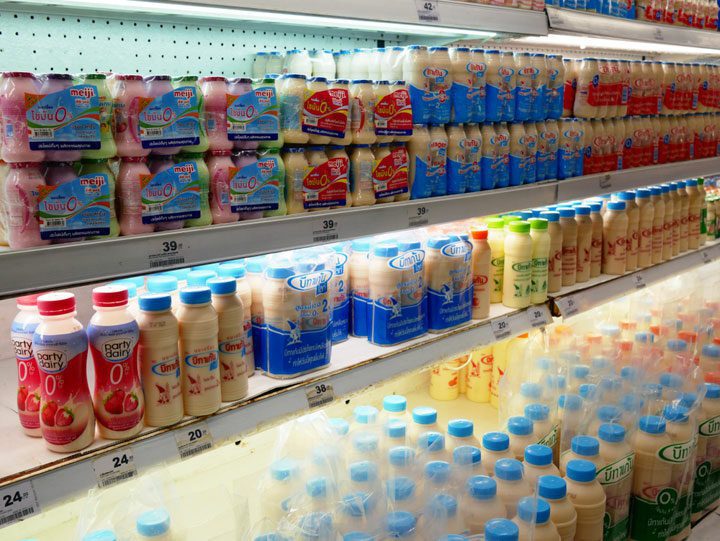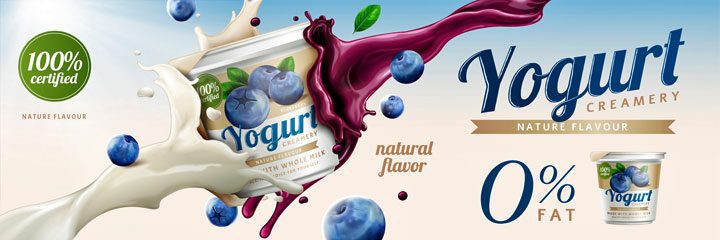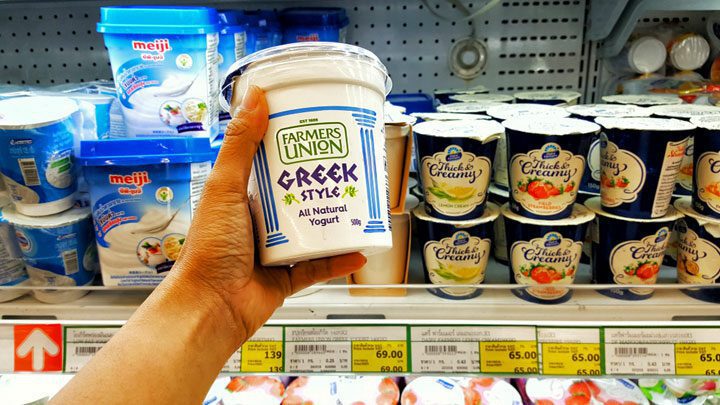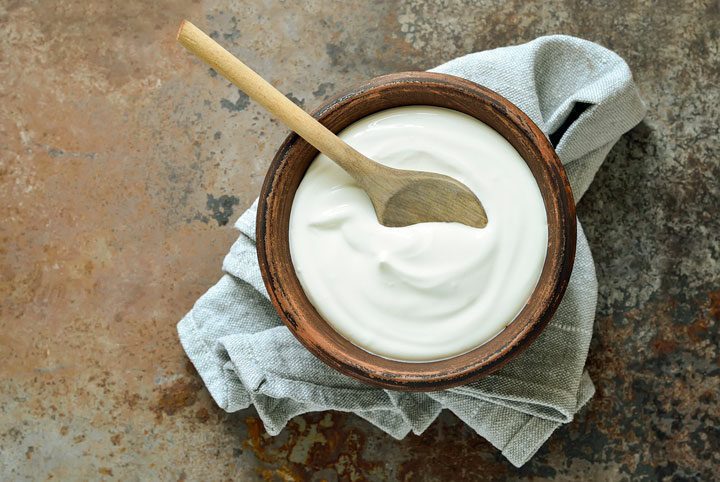Thanks to the broadcasts of the Keuringsdienst van Waarde, viewers have learned more and more about how manufacturers come up with all sorts of things to throw sand in the eyes of the consumer or to let things be different than they seem.
In fact, these manufacturers play with the letters of the law in the desire to sell as much (nonsense) as possible, such as blueberry yogurt with two blueberries in it, and it is up to the consumer to learn not to take anything and everything for truth. to take.
Precisely because of such programs and other matters that are thrown into the (social) media, more and more people are looking more critically at governments, manufacturers and supermarkets with their own brands, because those are the parties that have a responsibility for most of the products that ultimately end up in the market. supermarket shelves.
Of course it is no different in Thailand and I once went looking for yogurt. And I don't mean that sweet drinking yoghurt, but the delicious sour yoghurt. Just like in the EU, yogurt in Thailand may only be called yogurt if there are two specific types of live lactic acid bacteria in the product and possibly supplemented with other types, so that's easy. So the Thai version of yogurt should have about the same sour taste.

chanonnat srisura / Shutterstock.com
A look at Big C's website shows that they offer no less than 104 types of yoghurt with the corresponding price variations and suddenly Teun vd K. came into play. For this "in-depth" study, the Natural Flavor yogurts, or the unprocessed versions, have been scrutinized. Not all yoghurts are packed in the same size and I have therefore calculated everything back to a kilo price and see the result here:
- Meiji – 104 baht
- Yolida – 131 baht
- Dairy Home – 173 baht
- Farmers Union – 219 baht
Basically, every yogurt is the same, but why does one cost so much more than the other?
The journalistic rebuttal has been skipped this time and we come to the cautious conclusion that Meiji is made by CP, among others, the owner of the 7-Eleven stores and can handle this price due to its scale. In addition, they play a prominent role in the agricultural sector and they should perhaps pay their farmers a few baht more.
Yolida and Dairyhome are the players who respond to sentiment with Dairyhome as a more sustainable party. Farmers Union is an Australian company so there may be higher logistics costs that can make the difference. Yolida and Dairyhome are the mid-range in terms of price, with the latter being 1/3 more expensive. For just that difference in price you can buy a liter of yogurt in the Netherlands, which shows that yogurt in Thailand is quite expensive.
At a time when you get so little baht for the euro, all savings are welcome for some people, especially if you enjoy a daily bowl of yogurt. Fortunately, there is a simple solution for that, namely making yogurt yourself.
It must be said that it is actually eerily simple and the result is certainly there as it is no different than the product you start with. As mentioned earlier, yogurt has live lactic acid bacteria, which form the basis of the recipe.
Ingredients for semi-skimmed yogurt:
- 100 grams of yogurt
- 1 liter semi-skimmed milk
- plastic container or cup with lid (just over 1 liter capacity)
- plastic cool box double wall and lid that fits the bowl or cup
- pan
- water (the bowl or cup must be half in the water)
Semi-skimmed milk is already heated to 72 degrees and you could heat it to 85 degrees. I don't do this myself since during the process the milk gets an acidity of 4-4,5 and then the bacteria will die of their own accord.
- Put the water in the pan and heat it until the water starts to boil.
- In the meantime, pour the yogurt into the container or cup, fill it with the milk up to a cm below the edge and close it with the lid.
- Place the container or cup in the cool box
- As soon as the water just boils, pour it into the cool box so that the bowl or cup is half in the water
- Close the lid of the cool box and leave it for 12 hours
- After 12 hours, the container or cup can be placed in the refrigerator to cool for 5 hours.
- After 5 hours the yogurt is ready to use.
Because of the acidity, the yogurt can be stored in the refrigerator for at least 4 weeks and can be used as a basis to produce a new stock of yogurt every time. Please note that you work cleanly and put 100 grams separately in a clean box for a new culture.
Milk costs between 42-45 baht per liter and with this method you can easily save costs and still enjoy home-grown yogurt.
If you want to make cream cheese, the yogurt must be poured onto a sieve and then drained in the refrigerator for 16 hours. Here too, hygiene determines quality and a closed system must be used.
If readers have any tips, we'd love to hear them.
Submitted by Teun and Johnny BG





After reading the above, as a yogurt lover I went to the internet; because of the cool box... because who has a cool box in Thailand. Simply heat a thick pan with a lid, milk to the boil and stir well, add yogurt and stir. And then let the pan gradually cool in the open air (4-6 hours), it does not cool down in Thailand (minimum temperature is 30 degrees) so that is good for the process. And then into the refrigerator. Finished.
I use a cool box to keep purchased products fresh until home.
On the way it is sometimes useful if you want to take a "preferred" drink that is not for sale everywhere.
A liter of full-fat milk, add some yoghurt and leave it outside the fridge for 24 hours
Result yogurt pure without additives
Also delicious with some honey..
How much yoghurt should be added?
About 10% of the amount of milk used is sufficient for a 12-hour culture.
2 tablespoons
Indeed, that's how I've been doing it for years, just pour half a liter of cold milk into a jar of yogurt, stir it vigorously and then cover it and put it away outside the fridge.
The best growing temperature is between 30 and 45 degrees.
After about 6 hours you will have half a liter of yogurt. You can repeat this process several times by adding milk, but after a few times the quality decreases, so it's time to buy a new jar of yogurt.
Had first bought a yoghurt making machine, but that is no more than a container with a heating element in it, so completely unnecessary in Thailand.
Ps
Yoghurt with fruit is also possible, but unfortunately the fruit does not multiply, so it is better to add it later,
You write:
“Basically, every yogurt is the same, but why does one cost so much more than the other?”
Besides the reasons you mention. Here's a few more.
The four yoghurts mentioned are probably not the same in terms of ingredients, eg, in the use of "good" or "bad" milk (compare Gouda cheese imported from Poland or Egypt).
And further: if I remember correctly, the Meiji was a lot thinner than the Yolida, so it apparently contained more water (but correct me if I am wrong).
For connoisseurs, there will be a difference between the different yoghurts, but we cannot count ourselves among those. In the end, there is no arguing about taste, just like with wine, no one can say which is the best.
The food of the two lactic acid bacteria is the milk sugars, but proteins, fats, temperature and time also play a role in eventually getting a certain taste.
At 25 degrees and cultivating for 10 hours, the final yoghurt will be less acidic and will therefore only keep for a few days.
At 40 degrees and 20 hours you get a very sour yoghurt.
Unlike cheese, you can adjust the circumstances every day to achieve the perfect yogurt, and also consider using buffalo or goat milk.
Johnny BG, do you know if you can make kefir in a similar way, is that a similar process?
I have no idea about that, but the link contains some useful information about milk kefir https://thaiartisanfoods.com/shop/milk-kefir-grains-tibetan-mushroom-live/
I use Yolida for this, the best I think. Add a jar of yougort + milk, cover with cloth and enjoy delicious yougort the next day.
The title alone appeals to me. Making your own yogurt, I've been doing that for years.
Years ago I bought a yogurt maker at YOK in Chiang Mai (or via internet Lazada) for I think 2000 bath.
Take 1 liter of whole milk with dark blue cap (91 bath) and put it in a pan. Heat it to about 35 – 40 degrees and add a good tablespoon of Yolida yoghurt (52 bath) and stir vigorously with a whisk.
The yogurt maker consists of a plastic container with a lid and 12 glass jars with matching lids. Pour the milk into the 12 jars, just enough to fill all the jars, put the plastic lid on and set the timer to 9 o'clock, so I do that in the evening.
The next morning the lids on the jars and in the refrigerator.
Result, delicious thick and sour yogurt. Now it's strawberry time, so cut some strawberries into pieces every evening and mix them with the contents of a jar of yogurt. My mouth is watering as I write. Good luck.
Pour the cup of yogurt into a deep plate, add milk until the plate is full, stir well.
Minute or two in magnatron should not boil about 40 degrees.
Leave in the microwave.
After about 12 hours ready and in the fridge.
At Lazada, a liter pot to make Yoghurt costs 500 bht. Two tablespoons of yolida, stir well and turn on the device for 24 hours. You can make a new portion of that yogurt a number of times.
If you have a piece of cheesecloth you can make Greek (thick) or let it drain even more until you have a kind of cottage cheese. With some herbs delicious on bread or in dishes.
I like easy, at the Makro 1 pot 1.8 kg yolida yogurt natural flavor for 175 Bath